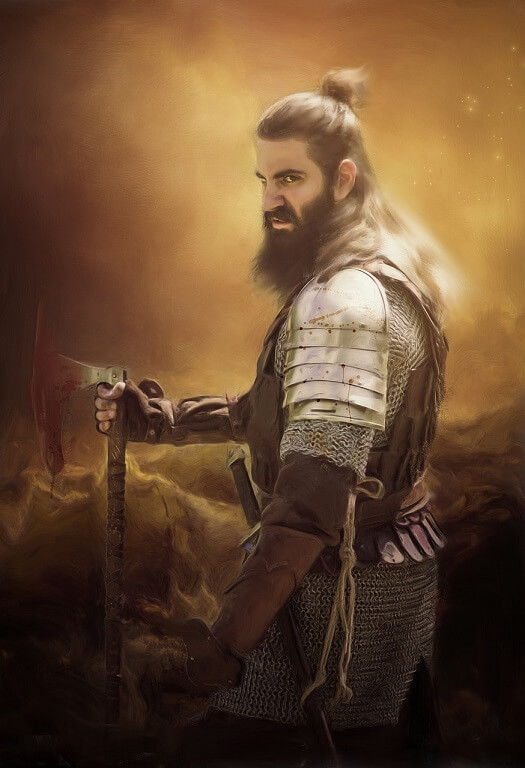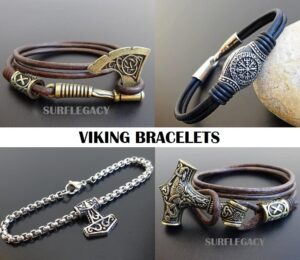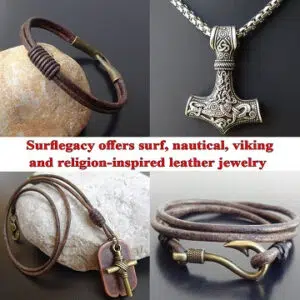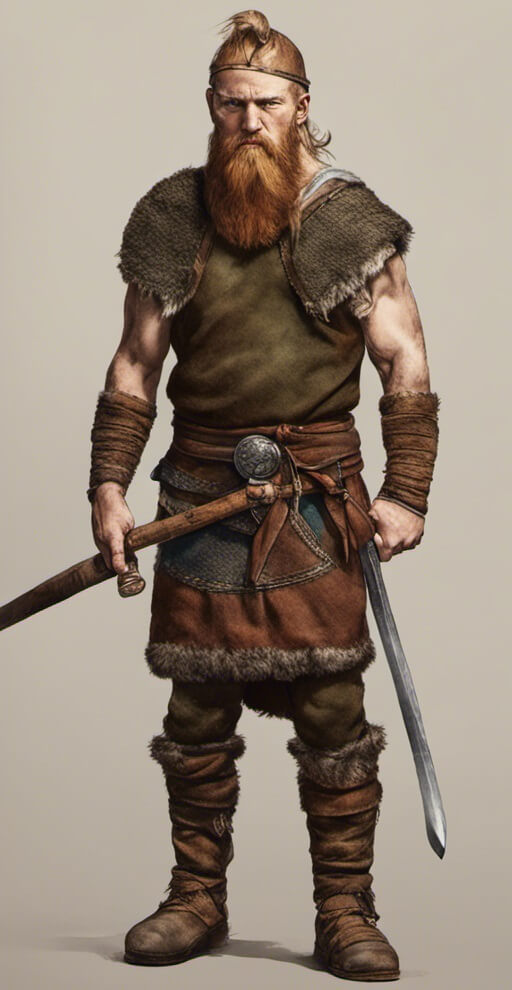Halfdan Ragnarsson (died 877) was a prominent Viking leader and commander of the Great Heathen Army, which launched invasions into the Anglo-Saxon kingdoms of England beginning in 865.
As one of the sons of the legendary Ragnar Lodbrok, Halfdan’s lineage was steeped in Viking history.
In this comprehensive blog post, we explore the remarkable life, achievements, and lasting legacy of Halfdan Ragnarsson.
From his role in the Great Heathen Army to his leadership in Northumbria and his aspirations for the Kingdom of Dublin, Halfdan’s story is a captivating journey through the Viking Age. Join us as we uncover the historical facts and delve into the enduring myth surrounding this renowned Viking figure.
Background and Early Life
Halfdan Ragnarsson, was born into a lineage of renowned warriors and explorers. As one of the sons of the legendary Ragnar Lodbrok, Halfdan inherited a legacy steeped in Viking sagas and tales of valor. Raised in a family of formidable warriors, he was immersed in a culture that valued bravery, conquest, and exploration.
Ragnar Lodbrok, a figure of myth and legend, was not only a father to Halfdan but also a symbol of Viking prowess and audacity. While historical evidence regarding Ragnar’s existence remains debated, his larger-than-life persona looms large in Viking lore.
Halfdan’s connection to this legendary figure adds an air of mystique to his own narrative, further fueling the intrigue surrounding his exploits.
Growing up in a society shaped by seafaring, raiding, and conquest, Halfdan was exposed to the adventurous spirit and martial traditions of the Vikings from a young age. He likely received training in combat and leadership, honing his skills and preparing for a life of warfare.
These formative experiences instilled in him the values of bravery, loyalty, and strategic thinking that would later define his role as a Viking leader.
The legendary figure of Ragnar Lothbrok and Halfdan’s connection to him Ragnar Lodbrok, Halfdan’s father, was a legendary figure in Viking lore. While historical evidence surrounding Ragnar’s existence remains debated, his larger-than-life persona and exploits were celebrated throughout the Viking world.
Halfdan’s connection to Ragnar added to his own status and reputation, as he was seen as carrying on the legacy of his famous father. The association with such a renowned figure further fueled the intrigue surrounding Halfdan’s endeavors.
In the following chapters, we will delve into the epic saga of Halfdan Ragnarsson as he leads the Great Heathen Army in their invasion of the Anglo-Saxon kingdoms of England, leaving an indelible mark on history.
Halfdan Ragnarsson’s Viking Raids and Conquests
Halfdan Ragnarsson, a prominent Viking leader and commander of the Great Heathen Army, played a significant role in Viking raids and conquests across Europe. As one of the sons of Ragnar Lodbrok, Halfdan embarked on a series of expeditions that left a lasting impact on Viking society and the regions they targeted.
Halfdan’s participation in Viking raids across Europe was marked by his leadership and strategic prowess. Alongside his brothers and fellow Viking warriors, including Björn Ironside, Ivar the Boneless, Sigurd Snake-in-the-Eye, Ubba, and Hvitserk, Halfdan led the Great Heathen Army’s invasion of the Anglo-Saxon kingdoms of England, which commenced in 865.
The Viking invasion, organized by the sons of Ragnar Lodbrok, aimed to avenge the death of their father at the hands of Ælla of Northumbria. While the historical accuracy of this account remains uncertain, the Great Heathen Army, predominantly identified as Danes, made significant progress in their campaigns.
They first landed in East Anglia in 865, securing horses for their subsequent endeavors.
Moving northwards, Halfdan and his Viking forces invaded Northumbria, a kingdom engulfed in a civil war between Ælla and Osberht, both vying for the Northumbrian throne.
In 866, the army successfully captured the prosperous settlement of York, establishing their dominance in the region.
Ælla and Osberht attempted to retake the city the following year but were defeated in battle, leading to the collapse of Northumbrian resistance.
The Danes, lacking a clear leader, installed a puppet-king named Ecgberht to rule in their name and collect taxes. Expanding their conquests, Halfdan and the Great Heathen Army moved south and invaded the Kingdom of Mercia in 867, seizing the town of Nottingham, where they wintered.
In response, the Mercian king, Burghred, formed an alliance with the West Saxon King Æthelred, laying siege to Nottingham. Although the Anglo-Saxon forces couldn’t recapture the city, a truce was agreed upon, and the Danes withdrew to York, where they gathered strength for future assaults.
In 869, the Great Heathen Army returned to East Anglia, determined to conquer the region. They clashed with the East Anglian army at Thetford, resulting in the defeat of the Anglo-Saxons and the death of their commander, King Edmund.
According to medieval tradition, Edmund is regarded as a martyr who refused to renounce Christianity and was executed by Ivar and Ubba, though Halfdan’s specific role remains uncertain.
Following the conquest of East Anglia, Ivar, who had been a key commander, left the Great Heathen Army, while Halfdan assumed a prominent leadership position.
In 870, Halfdan led the army in an invasion of Wessex, engaging in multiple battles against the West Saxons, including the notable Battle of Ashdown. Despite their efforts, the West Saxons, led by the newly crowned King Alfred, proved resilient, and a truce was eventually agreed upon.
The army sought refuge in the captured city of London during the winter of 871/872, where coins were minted bearing Halfdan’s name.
In the subsequent year, the Great Heathen Army returned to Northumbria to suppress a revolt against their puppet-regent Ecgberht. While the reasons for this move have been subject to debate, it is suggested that the conflict with Mercia played a role.
The army wintered in Torksey before moving to the Repton district. In 874, they conquered Mercia, deposing King Burghred and installing a Danish-puppet regent named Ceolwulf.
Following this victory, the Great Heathen Army split into two factions. One, led by Guthrum, continued to fight against Wessex, while the other, led by Halfdan, headed north to confront the Picts and Britons of Strathclyde.
Halfdan’s campaign in Ireland aimed to reclaim the lost kingdom of his deceased brother, Ivar. In 875, Halfdan, identified as “Albann,” deceitfully killed Eystein Olafsson, the King of Dublin. However, his rule of Dublin was short-lived, as he was deposed while away in York.
In 877, Halfdan returned to Ireland with the intention of recapturing Dublin. However, he faced opposition from an army of “Fair Heathens,” likely the Viking population that had resided in Ireland for an extended period. The forces clashed at the Battle of Strangford Lough, where Halfdan met his demise.
Halfdan Ragnarsson’s Viking raids and conquests left a lasting impact on Viking society and the regions they targeted. Their invasions reshaped the political landscape of England, leading to the establishment of Viking-controlled territories and the displacement of existing rulers.
Halfdan’s conquests in Northumbria and Mercia, as well as the subsequent division of the Great Heathen Army’s forces, set the stage for further Viking incursions and power struggles in England. The repercussions of these events would reverberate for years to come, shaping the course of Viking history in the region.
Political and Leadership Achievements of Halfdan Ragnarsson
Halfdan Ragnarsson’s rise to power and establishment of his kingdom marked significant milestones in the Viking Age. As one of the leaders of the Great Heathen Army, Halfdan played a pivotal role in the invasion of England, ultimately becoming the first Viking King of Northumbria.
His leadership style showcased strong military prowess, strategic acumen, and the ability to inspire and command his troops.
Under Halfdan’s rule, effective governance strategies were employed to maintain stability within his kingdom. While consolidating power, he also acknowledged local rulers and customs, striking a balance between forceful control and accommodation.
This approach facilitated the collection of taxes and tribute, ensuring the continued strength and prosperity of the Viking forces.
Recognizing the importance of alliances and diplomatic relations, Halfdan forged strategic partnerships with other Viking leaders and kingdoms. These alliances, particularly with his brothers and fellow leaders of the Great Heathen Army, played a vital role in his success and the achievements of the Viking forces as a whole.
It is speculated that Halfdan may have even co-ruled Denmark with his brother Sigurd Snake-in-the-Eye, highlighting his ability to navigate complex power dynamics.
Halfdan’s reign was characterized by the consolidation of power and the expansion of his realm. Through successful military campaigns, he conquered Northumbria and Mercia, installing puppet rulers loyal to him.
This allowed him to effectively control these territories and collect taxes for the benefit of the Viking forces. Additionally, his ambitions extended beyond these regions, as demonstrated by his incursions into East Anglia and Wessex, solidifying his reputation as a formidable Viking leader.
Cultural and Religious Influence of Halfdan Ragnarsson
Halfdan Ragnarsson’s impact on Viking culture and mythology was significant, contributing to the rich tapestry of Norse traditions. As a renowned Viking leader, his deeds and conquests became part of the collective memory and lore of his people.
The sagas and legends that emerged from this era often featured Halfdan as a prominent figure, highlighting his larger-than-life status.
Religion played a central role in Viking society, and Halfdan’s religious beliefs would have shaped his reign.
As a follower of Norse mythology, he likely adhered to the gods and rituals that were revered by the Vikings. Odin, Thor, and Freya, among others, held immense significance in their cosmology, and their divine intervention was often sought in times of war and conquest.
Halfdan’s devotion to these deities would have influenced his decisions and actions as a leader.
Halfdan’s patronage extended beyond military and political affairs, encompassing the arts, crafts, and storytelling of his people.
Through his support and encouragement, he fostered a vibrant cultural scene that celebrated the Norse heritage. Skilled artisans and craftsmen were given opportunities to showcase their talents, creating intricate metalwork, wood carvings, and other forms of craftsmanship that embodied the distinctive Viking aesthetic.
Storytelling and oral traditions flourished under Halfdan’s reign, with skalds and poets capturing the heroic exploits of their leaders in verse and prose.
These tales, often performed in grand feasts and gatherings, served as a means of preserving the Viking cultural heritage and reinforcing their values of courage, honor, and resilience. Halfdan’s own accomplishments became woven into the fabric of these narratives, immortalizing his legacy for generations to come.
Halfdan’s leadership and patronage played a crucial role in shaping Viking society and preserving their cultural heritage. His reign exemplified the ideals and values held dear by the Vikings, while also allowing for cultural exchange and assimilation of local customs.
Through his conquests, he brought Norse traditions to new lands, leaving an indelible mark on the regions he targeted. The Viking Age was defined by leaders like Halfdan, who not only expanded their territories but also safeguarded the unique cultural identity of their people.
Legacy and Historical Significance of Halfdan Ragnarsson
Halfdan Ragnarsson’s impact on Viking history and his contributions to the formation of a unified Viking identity was profound. As one of the leaders of the Great Heathen Army, he played a crucial role in the invasion of the Anglo-Saxon kingdoms of England, leaving a lasting impact on the region.
Despite the limited contemporary mentions of his existence, the historical significance of Halfdan and his brothers is widely acknowledged by scholars.
Halfdan’s military campaigns and conquests solidified his reputation as a formidable Viking leader. His involvement in the Great Heathen Army’s vengeance against Ælla of Northumbria and the subsequent capture of York showcased his strategic prowess and determination.
These events, along with his role as the first Viking King of Northumbria and his claim to the throne of the Kingdom of Dublin, cemented his position as a key figure in Viking history.
The descendants of Halfdan Ragnarsson went on to shape European history in significant ways. While Halfdan himself died in battle in Ireland, his offspring and their subsequent actions played pivotal roles in the establishment and expansion of Viking settlements and influence throughout Europe.
The Viking Age was characterized by the voyages and conquests of leaders like Halfdan and his descendants, leaving a lasting imprint on the regions they explored and settled.
Furthermore, Halfdan’s legacy extends beyond the realm of history and into modern-day interpretations and representations.
The saga traditions and medieval chronicles that recount the exploits of Halfdan and his brothers have contributed to their enduring fame and notoriety.
These narratives have been a source of inspiration for literature, art, and popular culture, fueling the fascination with Viking history and mythology.
Final Thoughts
With his notable achievements, Halfdan Ragnarsson remains an emblematic figure of the Viking Age. His leadership, conquests, and contributions to a unified Viking identity make him a symbol of Viking prowess and ambition.
While the historical records about Halfdan Ragnarsson may be limited, his legacy lives on through the enduring interest in Viking history and the exploration of his impact on the world.
As we continue to delve into the past and uncover more about Halfdan Ragnarsson and his era, his significance is likely to become even more pronounced, cementing his place in the annals of history as a Viking leader of great influence.
Shop Viking Jewelry
Are passionate about Vikings or Norse Myths?
Finding the ideal piece of Viking Jewelry can be challenging and time-consuming, especially if you lack inspiration or don’t know where to look.
Surflegacy, has you covered. We have a wide range of Handmade Jewelry in various styles, shapes, colors, and materials, to accentuate your Viking spirit and look. Do not hesitate to visit our selection HERE
Whatever you wear, you’ll find the ideal trendy piece to complement your wardrobe. Our jewelry is designed to be worn every day, no matter where you go or what season is. Are you ready to step up your wardrobe game?






